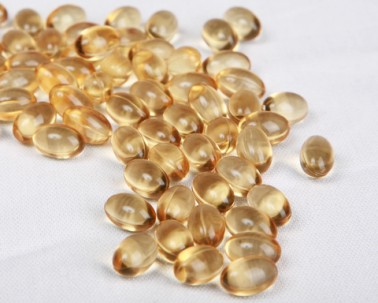Now that I have your attention, sex sells doesn’t it? Studies in men found that when Vitamin D is elevated so is testosterone. The inverse is true as well. When Vitamin D is decreased so is testosterone. And we all know testosterone is important for our sex drives. So having said that, you will see why it is important to know about this little Vitamin pictured above. And now onto my original article.
The dangers of avoiding the sun.
Have you had symptoms of muscle weakness, bone pain, mood changes or suffered from recurrent bouts of colds and flus? If so then you may be Vitamin D deficient. If you are, then you are not alone. Vitamin D Deficiency is a becoming a worldwide problem. It is thought that 85% of the American Public is deficient. While, a study conducted by the Department of Health Sciences at Qatar University showed that 53.5% of Qatari females of college age are severely vitamin D deficient and 43.6% have insufficient levels of the vitamin.
Vitamin D deficiency has been associated with a long list of disorders: heart attacks, obesity, depression, asthma, rheumatoid arthritis, diabetes, cardiovascular disorders, multiple sclerosis, rickets, osteoporosis, hypertension, certain cancers, and calcium deficiency. A previous study found that women who take vitamin D supplements lower their risk of death from heart disease by one-third.
The sun is important for production of Vitamin D at our skin’s surface. Vitamin D is important in the intestinal absorption of calcium and phosphate and in maintaining bone health. It also plays a role in our immunity, is an anti-oxidant and is anti-carcinogenic. Unfortunately as the temperature rises to scorching levels in Qatar, the time spent in the sun decreases. Furthermore, the more skin you have covered, the less sun exposure you receive as well.
How much sun exposure is necessary?
There are conflicting recommendations. The American Medical Association (AMA) recommends 10-15 minutes of sun exposure (without sunscreen) several times per week. While, Dr Mercola a prominent figure in healthcare in the US recommends: “10 to 15 minutes a day, with at least 40 percent of your skin exposed, as a general guide of how much you need, although people with dark skin will need to stay out significantly longer”. And lastly, the American Academy of Dermatology states “there is no scientifically validated, safe threshold level of UV exposure from the sun that allows for maximal vitamin D synthesis without increasing skin cancer risk.”
With the conflicting recommendations, what is one to do? With the high rate of deficiency, I am a strong proponent of safe sun exposure; avoiding midday sun when the UV rays are the strongest and allowing only a portion of your skin to be exposed. One of the controversies of using sunscreen is that it can cause you to be Vitamin D deficient. So while it is important to wear sunscreen fore go it for the times recommended above.
Sources of Vitamin D
The major sources of Vitamin D are found in fatty fish and in fortified foods; milk and cereals. High levels are found in salmon, mackerel and sardines and to a lesser extent in eggs (in the yolk). Here is an example of Vitamin D levels in food: 1 tablespoon of cod liver oil provides 1360 International Units (IU), 3 ounces of salmon provides 447 IU, a cup of fortified milk 115-124 IU and 1 egg 41 IU.
If you cannot get enough vitamin D in your diet or from the sun then you will need to take supplements. Vitamin D3 (cholecalciferol) increases Vitamin D levels more effectively then Vitamin D2. So always rely in Vitamin D3. When taking Vitamin D, it is also important to consume at least 1000 mg of calcium per day (for people age 31 to 50 years) and 1200 mg per day (for people age 51 and older).
Who to Screen?
Unfortunately, the only guidelines for screening for Vitamin D deficiency are for those who are at high risk: those with chronic kidney disease, liver disease, malabsorptive disorders like celiac disease, the elderly, and exclusively breastfed infants. The American Academy of Pediatrics (AAP) recommends routinely supplementing these infants.
You may not know if you are deficient unless you ask to be screened. With such a high instance of deficiency, I wouldn’t be surprised if the medical community didn’t start recommending vitamin D screening universally soon.
Medical Questions
1. How do you test for Vitamin D deficiency?
A blood test for 25(OH)D, also called 25-hydroxyvitamin D is the best marker of Vitamin D deficiency. It is thought that levels over 60 are essential. Although a level less than 20 is considered deficient.
2. How much vitamin D should one get in a day?
This varies on your age and your current level of Vitamin D deficiency. Those who have 25 (OH) D levels less than 20 ng/ml usually require 50,000 IU per week until they normalize. Infants 0-1 year of age should get 400 IU per day, those 1-70 years of age 600 IU per day and those over 71 years of age 800 IU per day.
3. How long after I begin treatment for Vitamin D deficiency should I have my blood retested?
3 months.
Discussion
Are you Vitamin D Deficient? Insufficient? If so, have you had any symptoms? Or are you saying what the heck is Vitamin D Deficiency?
I became insufficient (level = 20) after going dairy free to breastfeed my daughter. Much of the soy milk sold in Qatar is not Vit D fortified. Now your turn to share!
This article originally appeared in the Summer 2011 Issue of Woman Today magazine.
.
























Pingback: bluehost